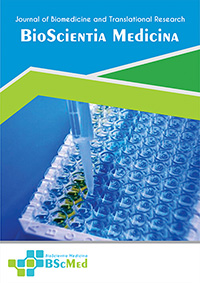Main Article Content
Abstract
Background: Hyperkalemia is a life-threatening complication of chronic kidney disease (CKD) and heart failure (HF), primarily impeding the use of life-saving renin-angiotensin-aldosterone system inhibitors (RAASi). This systematic review and meta-analysis evaluate the evidence for sodium zirconium cyclosilicate (SZC) in managing hyperkalemia and enabling RAASi therapy.
Methods: This systematic review searched Medline, Embase, and Cochrane CENTRAL to September 2025. Dual reviewers independently screened, extracted data, and assessed bias (Cochrane RoB 2, Newcastle-Ottawa Scale). We included RCTs and observational studies of SZC in adults with hyperkalemia. A random-effects meta-analysis was performed on RCTs reporting maintenance-phase efficacy and safety.
Results: The search yielded 1,254 citations, with 6 pivotal studies included. The meta-analysis of 3 RCTs found that SZC (5-10g daily) was significantly more effective than placebo at maintaining normokalemia over 12-28 days. The pooled mean difference in serum K+ was -0.58 mEq/L (95% CI: -0.65 to -0.51; I2 = 0%). SZC did increase the risk of edema (pooled Risk Ratio: 2.95; 95% CI: 1.51 to 5.76; I2 = 0%). The narrative synthesis of observational data confirmed that SZC use was associated with a >2.5-fold increase in the likelihood of continuing RAASi therapy.
Conclusion: Sodium zirconium cyclosilicate is a highly effective and rapidly acting agent for both acute correction and chronic management of hyperkalemia. Our meta-analysis provides a precise estimate of its high maintenance-phase efficacy. Its primary clinical benefit lies in providing a renal-independent pathway for potassium excretion, thereby "uncoupling" potassium levels from RAASi use and bridging a critical treatment gap.
Keywords
Article Details
As our aim is to disseminate original research article, hence the publishing right is a necessary one. The publishing right is needed in order to reach the agreement between the author and publisher. As the journal is fully open access, the authors will sign an exclusive license agreement.
The authors have the right to:
- Share their article in the same ways permitted to third parties under the relevant user license.
- Retain copyright, patent, trademark and other intellectual property rights including research data.
- Proper attribution and credit for the published work.
For the open access article, the publisher is granted to the following right.
- The non-exclusive right to publish the article and grant right to others.
- For the published article, the publisher applied for the Creative Commons Attribution-NonCommercial-ShareAlike 4.0 International License.





